Abstract
The complete autocorrelation function of the intensity fluctuations of laser light scattered from motile bull spermatozoa is shown to depend upon several factors not previously considered. Samples of bull spermatozoa generally contain a substantial proportion of dead cells, which give rise to slowly decaying components of the autocorrelation function. Whereas previous work has concentrated on the form of the fast decaying autocorrelation component, we are concerned here with the relative amplitude and shape of the slow autocorrelation component and the general form of the composite function. In principle, the relative amplitudes of the fast and slow components of the autocorrelation function can be used as an assay of the proportion of swimming cells. We show that this amplitude ratio depends upon cell concentration, scattering cell geometry, and scattering angle. A simple model is developed to explain these results on the basis of the asymmetry of light scattered from these cells, motile/immotile cell interactions, wall-swimming effects, and geotactic reorientation of dead cells.
Full text
PDF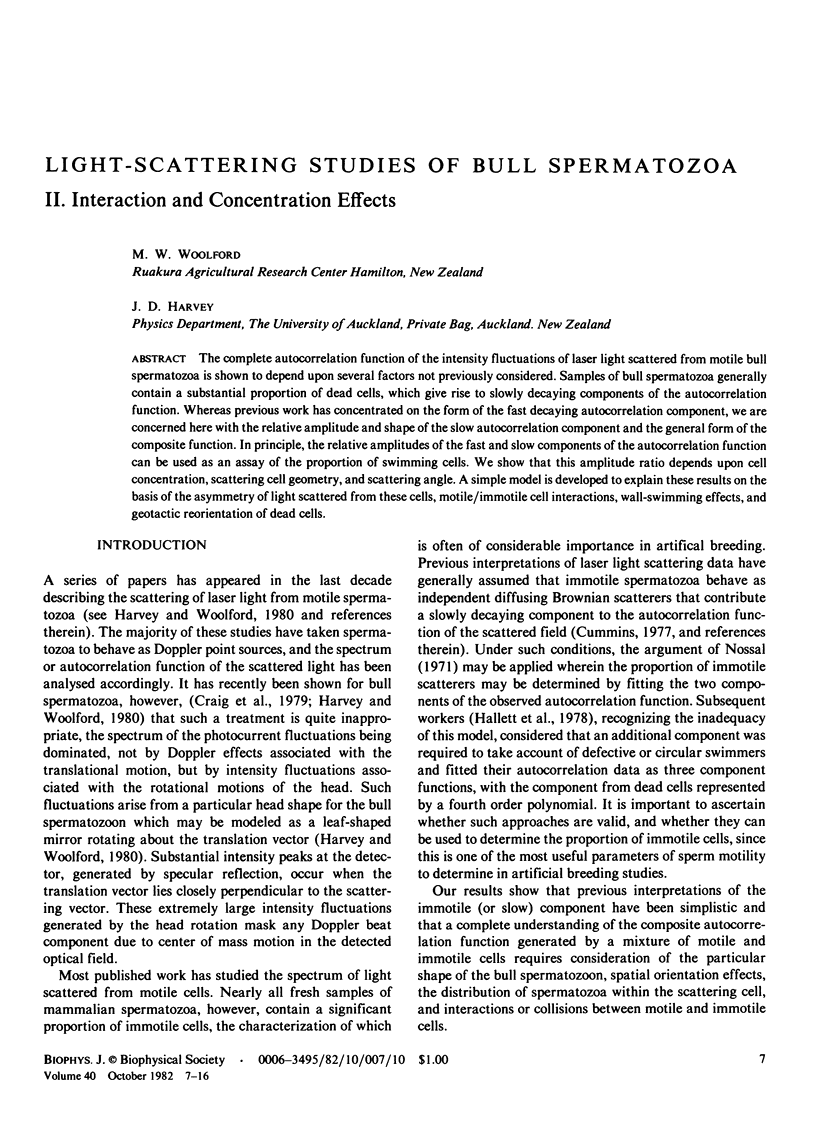
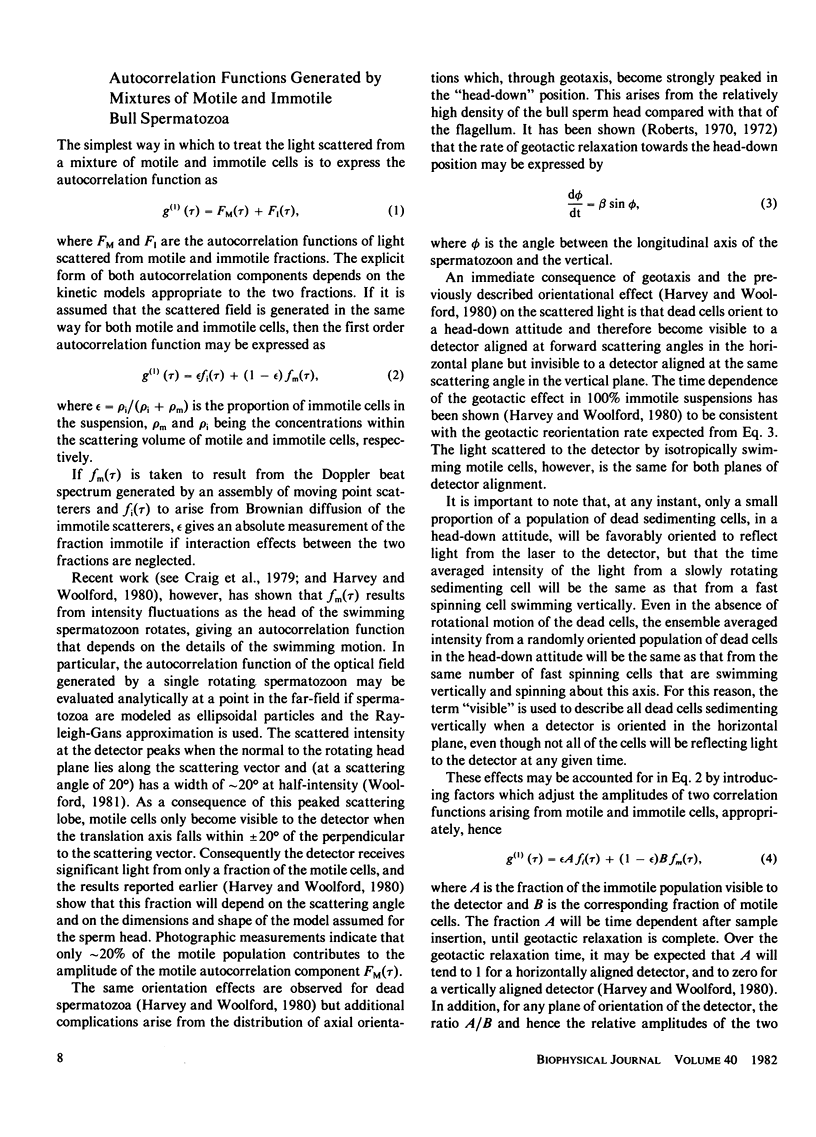
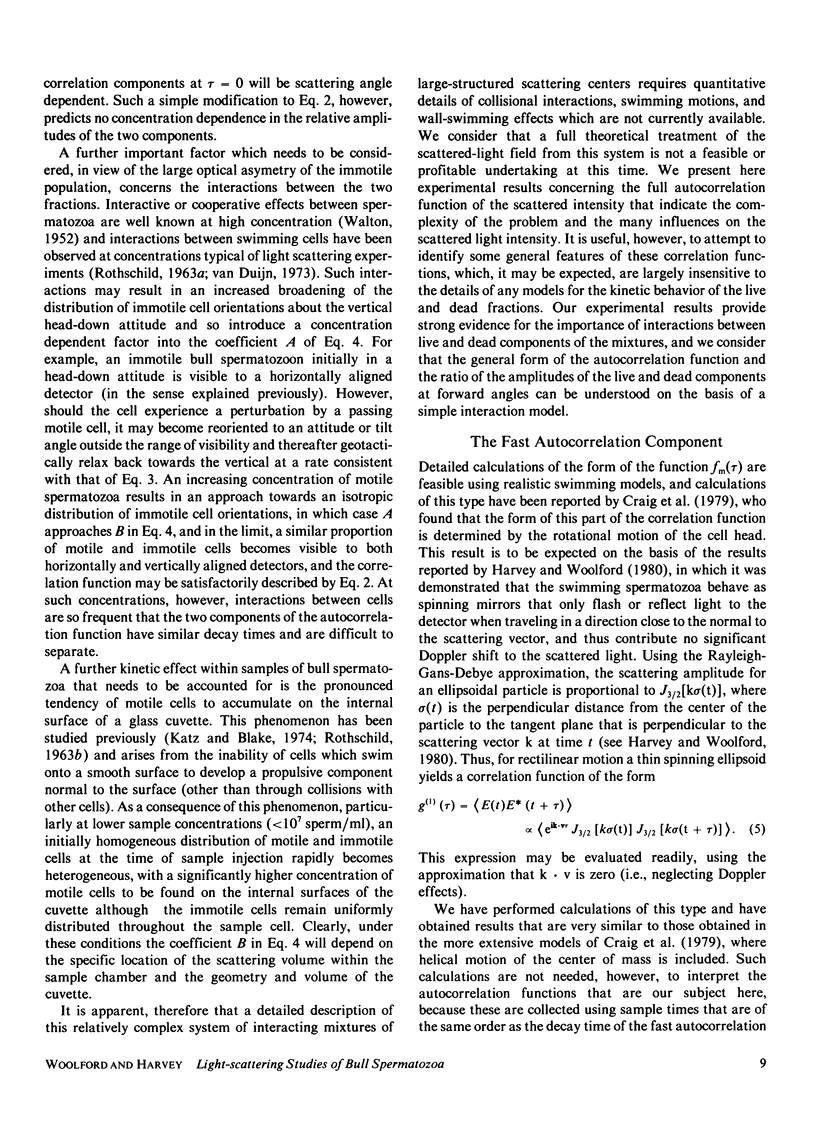
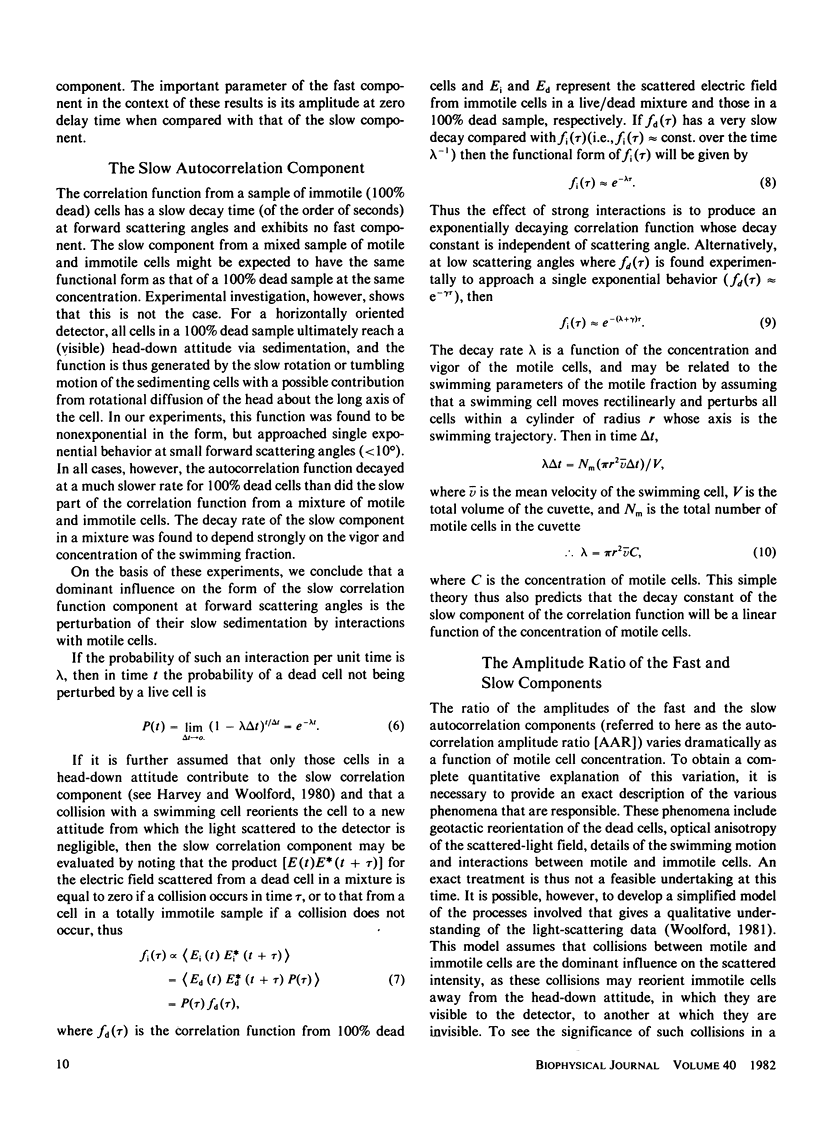
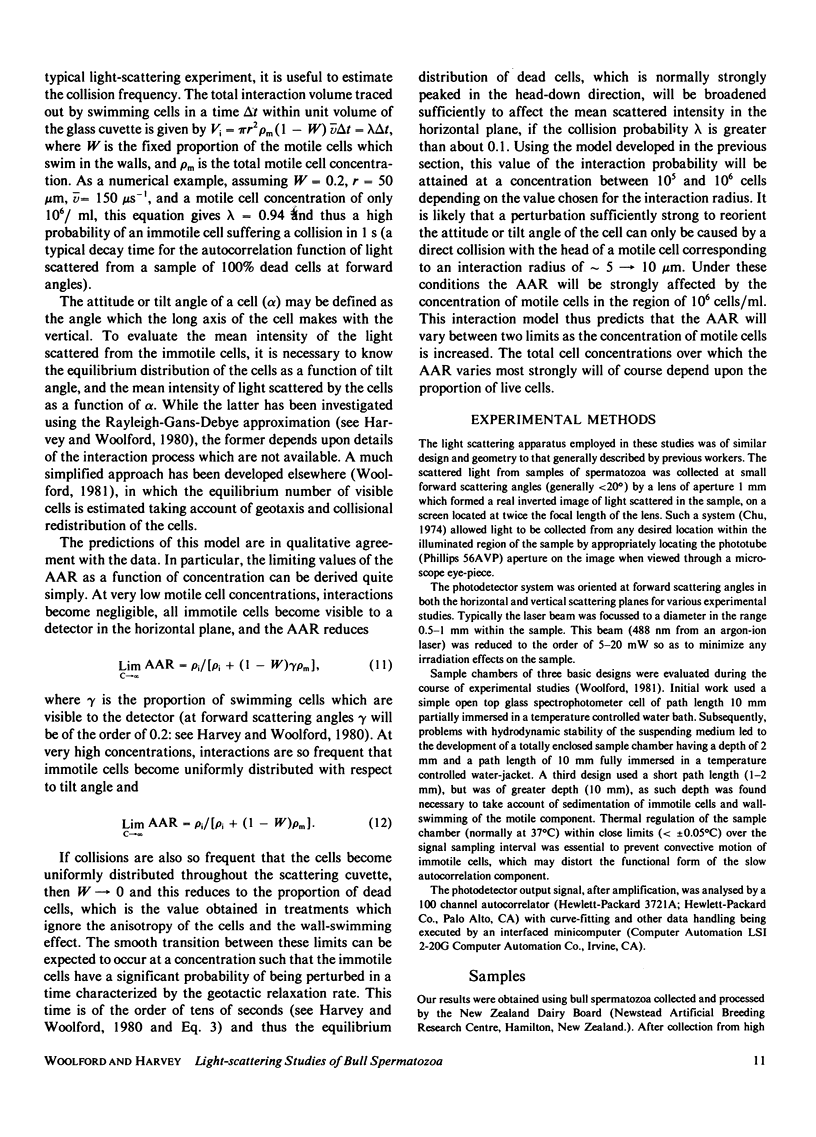
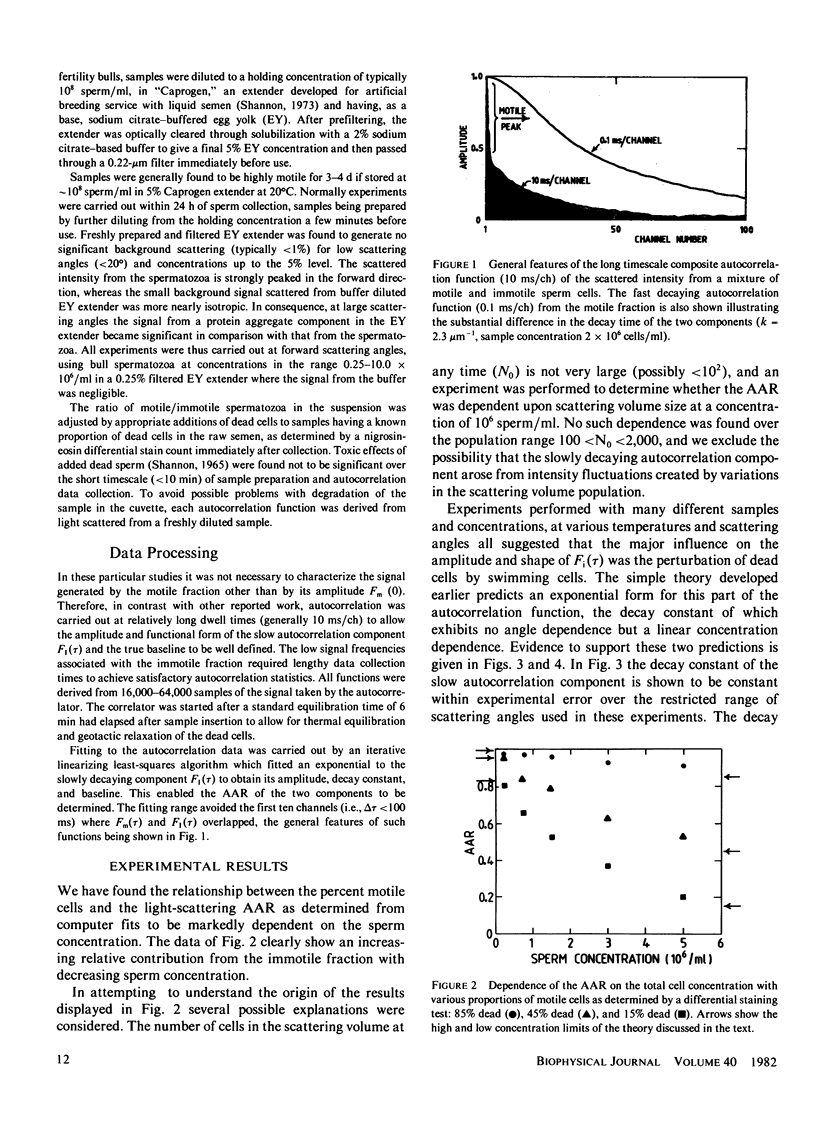
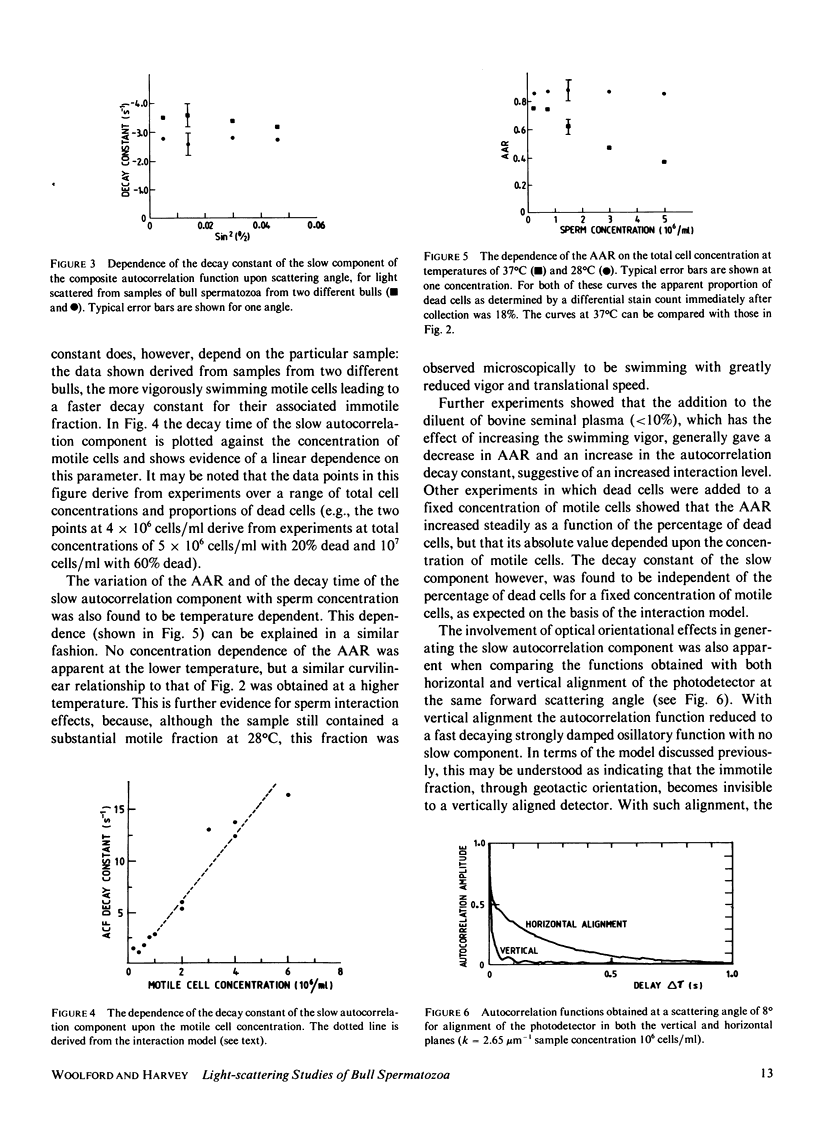
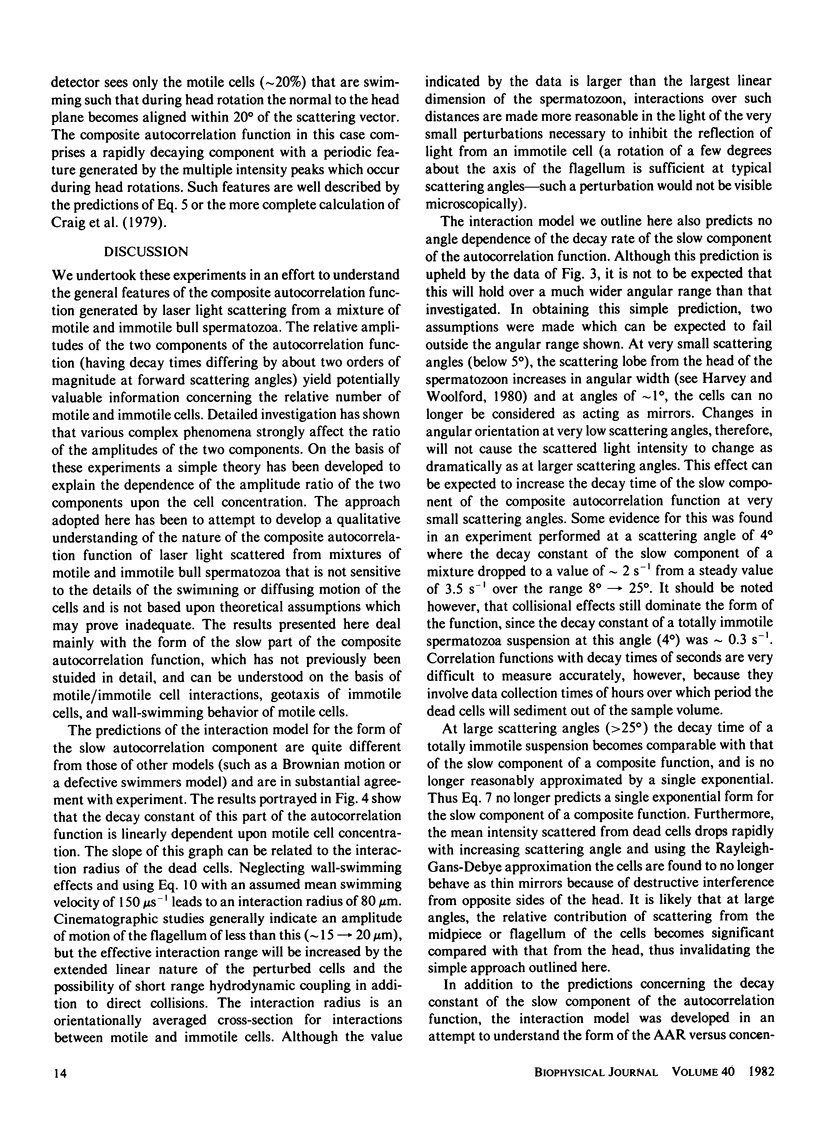
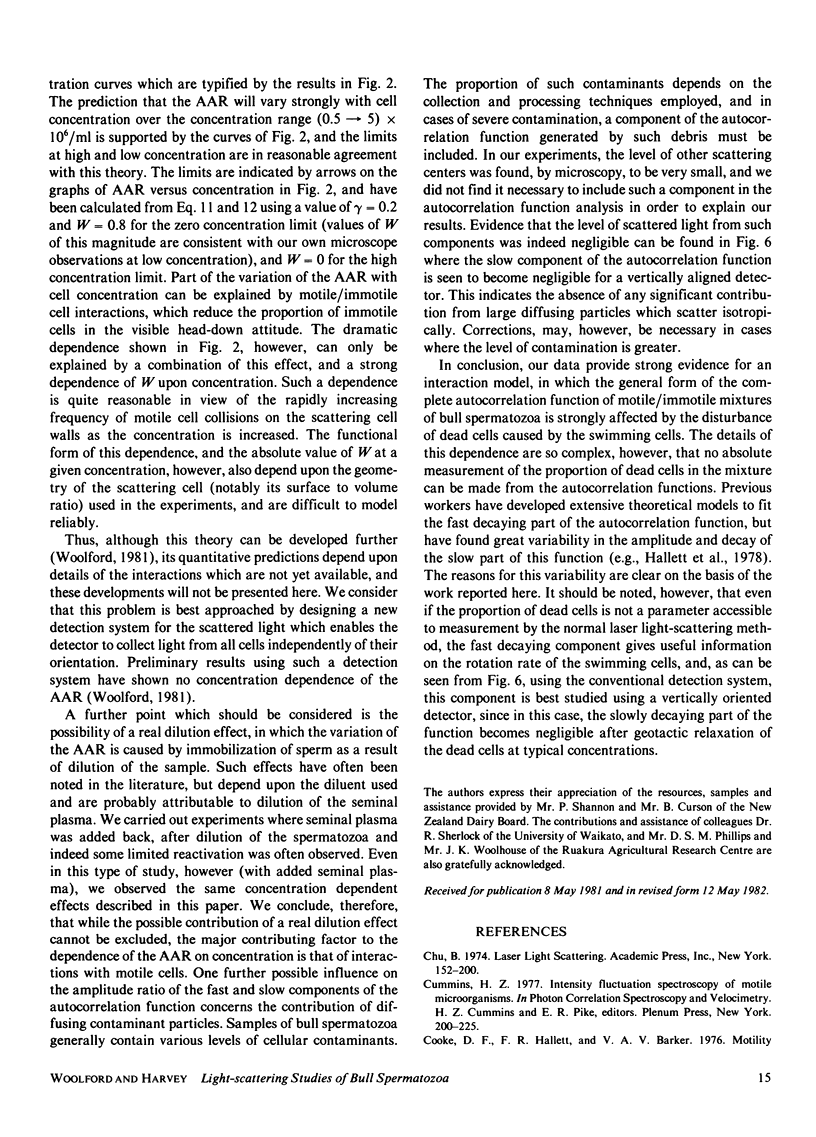
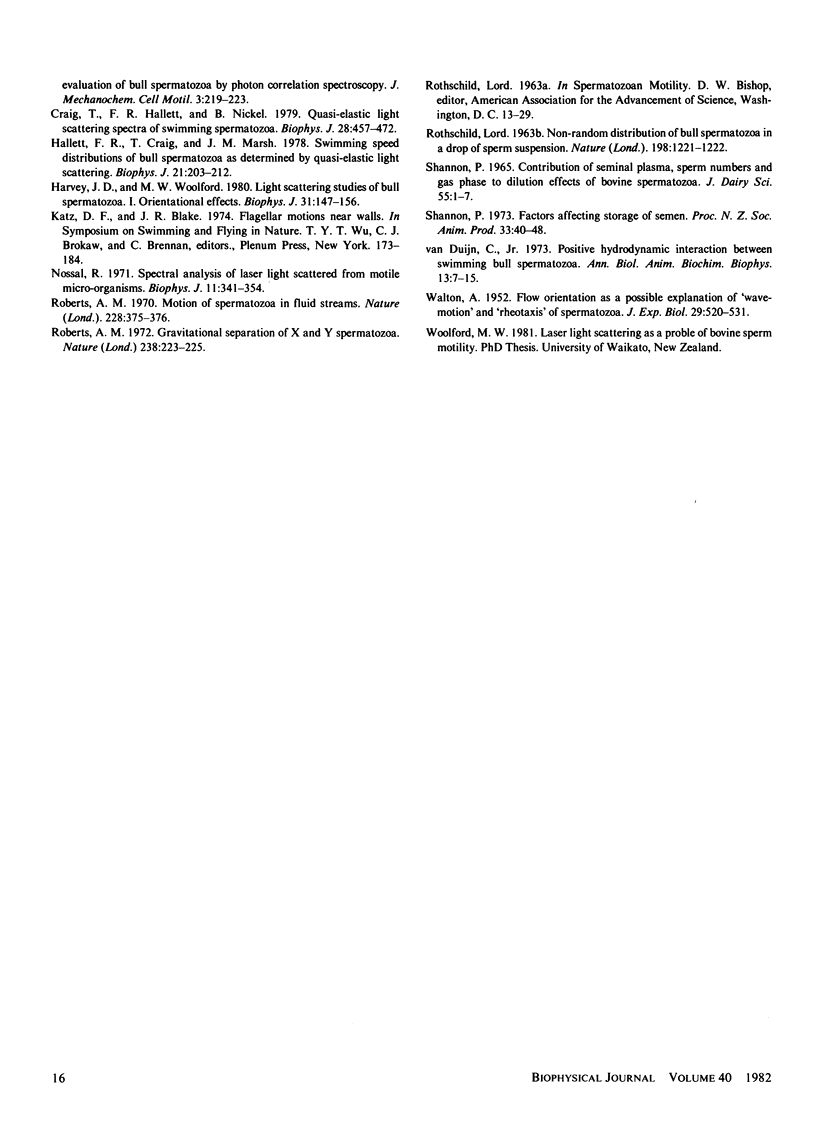
Selected References
These references are in PubMed. This may not be the complete list of references from this article.
- Cooke D. F., Hallett F. R., Barker C. A. Motility evaluation of bull spermatozoa by photon correlation spectroscopy. J Mechanochem Cell Motil. 1976;3(4):219–223. [PubMed] [Google Scholar]
- Craig T., Hallett F. R., Nickel B. Quasi-elastic light-scattering spectra of swimming spermatozoa. Rotational and translational effects. Biophys J. 1979 Dec;28(3):457–472. doi: 10.1016/S0006-3495(79)85193-0. [DOI] [PMC free article] [PubMed] [Google Scholar]
- Hallett F. R., Craig T., Marsh J. Swimming speed distributions of bull spermatozoa as determined by quasi-elastic light scattering. Biophys J. 1978 Mar;21(3):203–216. doi: 10.1016/S0006-3495(78)85520-9. [DOI] [PMC free article] [PubMed] [Google Scholar]
- Harvey J. D., Woolford M. W. Laser light-scattering studies of bull spermatozoa. I. Orientational effects. Biophys J. 1980 Jul;31(1):147–156. doi: 10.1016/S0006-3495(80)85046-6. [DOI] [PMC free article] [PubMed] [Google Scholar]
- Nossal R. Spectral analysis of laser light scattered from motile microorganisms. Biophys J. 1971 Apr;11(4):341–354. doi: 10.1016/S0006-3495(71)86219-7. [DOI] [PMC free article] [PubMed] [Google Scholar]
- Roberts A. M. Gravitational separation of X and Y spermatozoa. Nature. 1972 Jul 28;238(5361):223–225. doi: 10.1038/238223a0. [DOI] [PubMed] [Google Scholar]
- Roberts A. M. Motion of spermatozoa in fluid streams. Nature. 1970 Oct 24;228(5269):375–376. doi: 10.1038/228375a0. [DOI] [PubMed] [Google Scholar]
- Van Duijn C., Jr Positive hydrodynamic interaction between swimming bul spermatozoa. Ann Biol Anim Biochim Biophys. 1973;13(1):7–15. doi: 10.1051/rnd:19730102. [DOI] [PubMed] [Google Scholar]


